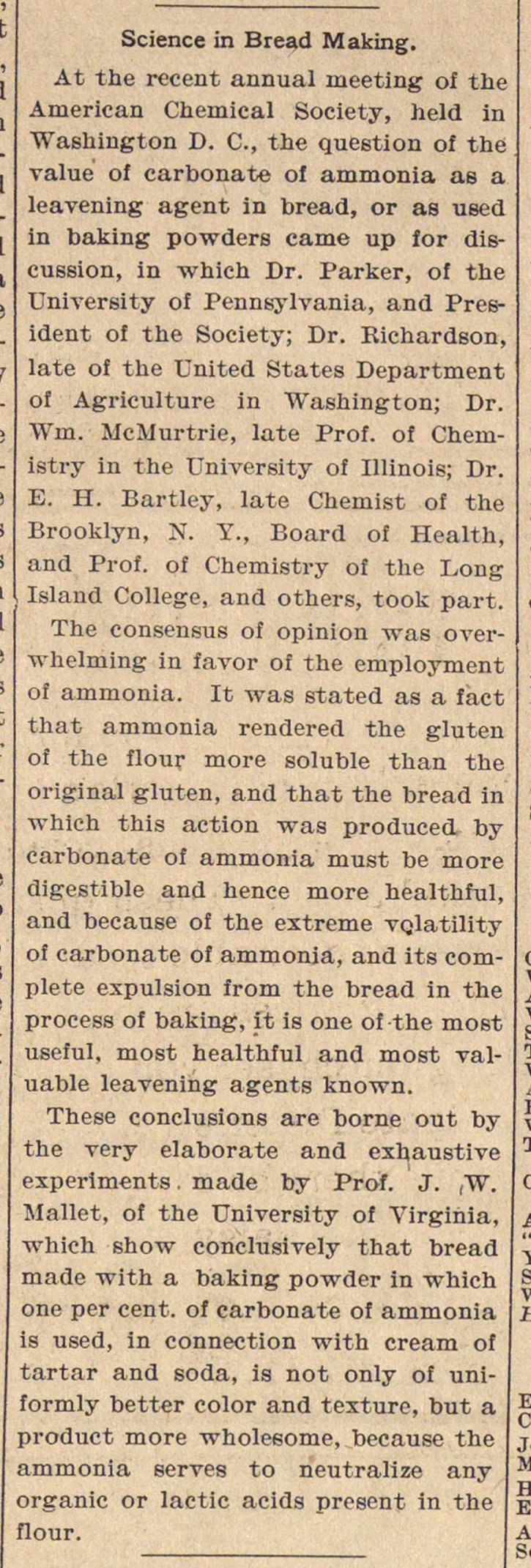Science In Bread Making

At the recent annual meeting of the American Chemical Society, held in Washington D. C, the question of the value of carbonate of ammonia as a leavening agent in bread, or as used in baking powders carne up for discussion, in which Dr. Parker, of the University of Pennsylvania, and President of the Society; Dr. Kichardson, late of the United States Department of Agriculture in Washington; Dr. Wm. McMurtrie, late Prof. of Cheniistry in the University of Illinois; Dr. E. H. Bartley, late Chemist of the Brooklyn, N. Y., Board of Health, and Prof. of Chemistry of the Long Island College, and others, took part. The consensus of opinión was overwhelming in favor of the employment of ammonia. It was stated as a fact that ammonia rendered the gluten of the flour more soluble than the original gluten, and that the bread in which this action was produced by carbonate of ammonia must be more digestible and henee more healthful, and because of the extreme VQlatility of carbonate of ammonia, and its complete expulsión from the bread in the process of baking, it is one of the most useful, most healthful and most valuable leavening agents known. These conclusions are borne out by the very elabórate and exhaustive experiments . made by Prof. J. ,W. Mallet, of the University of Virginia, which show conclusively that bread made with a baking powder in which one per cent. of carbonate of ammonia is used, in connection with cream of tartar and soda, is not only of uniformly better color and texture, but a product more wholesome, because the ammonia serves to neutralize any organic or lactic acids present in the flour.